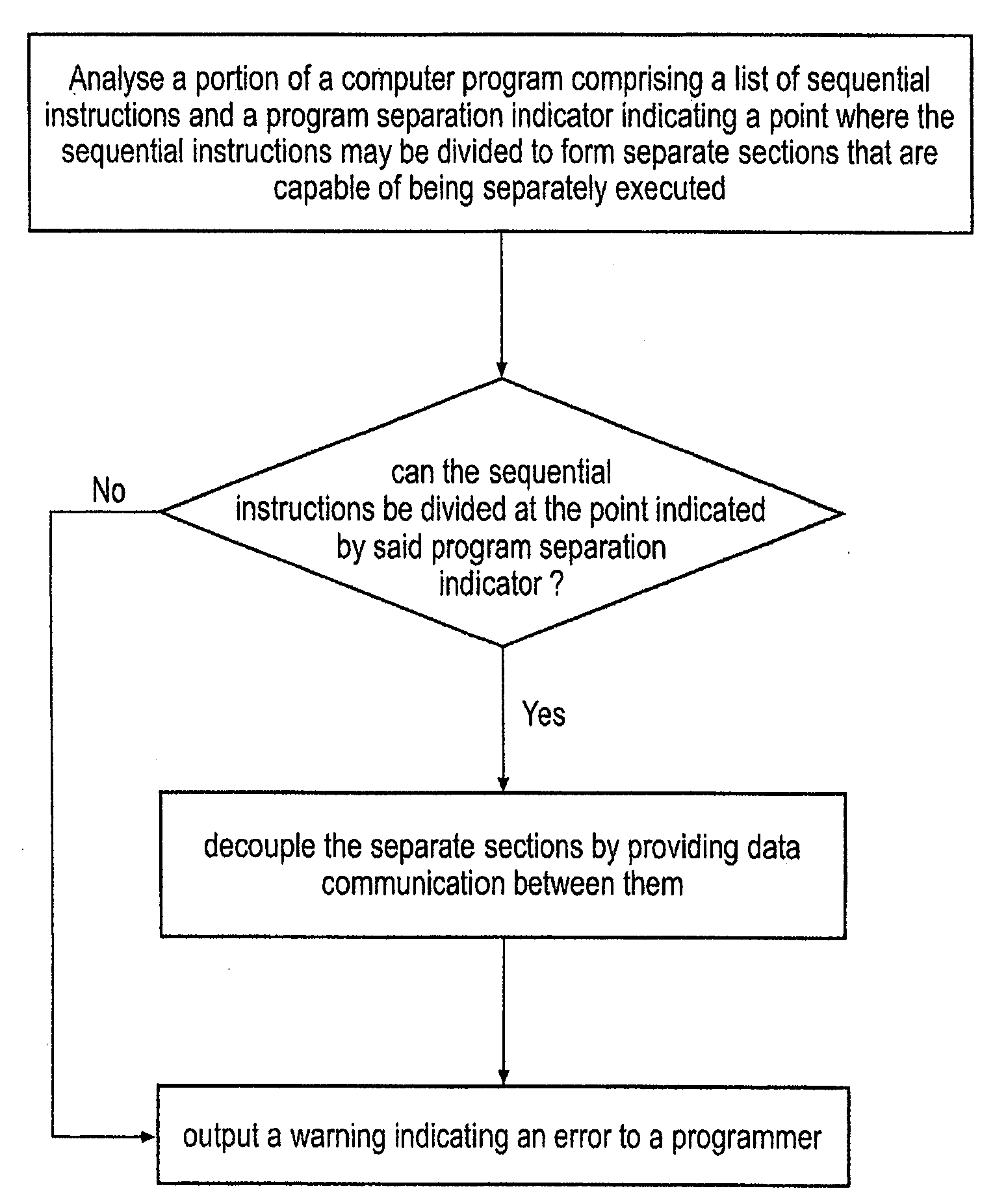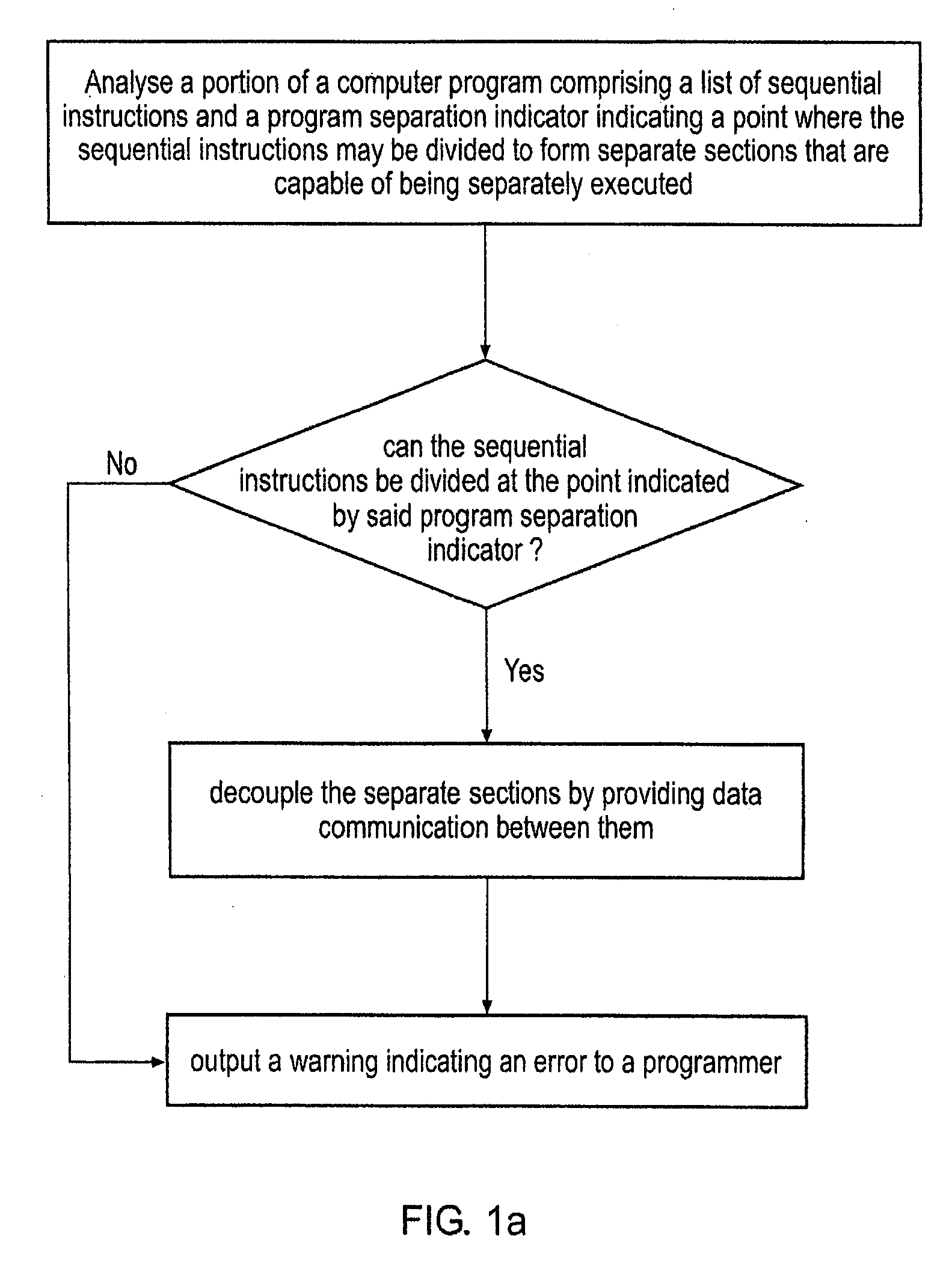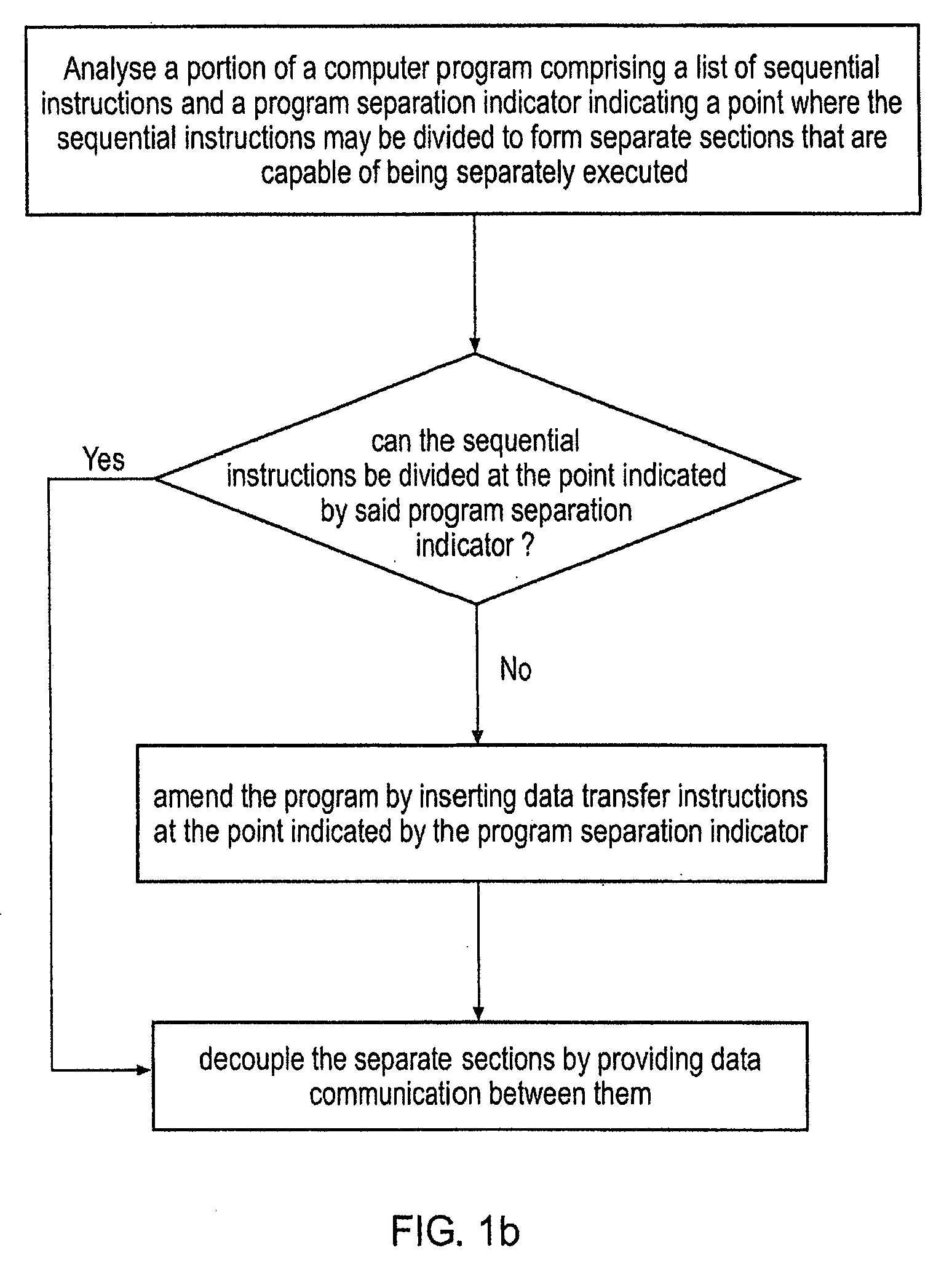Analyzing and transforming a computer program for executing on asymmetric multiprocessing systems
a multi-processing system and computer program technology, applied in the field of data processing, can solve the problems of increasing the difficulty of providing programs that are simple to write and yet perform efficiently on complex systems, systems with hardware restrictions, and the ever decreasing time to market, and achieve the effect of increasing efficiency and the demand for efficiency
- Summary
- Abstract
- Description
- Claims
- Application Information
AI Technical Summary
Benefits of technology
Problems solved by technology
Method used
Image
Examples
Embodiment Construction
[0066]FIG. 1a shows a flow diagram illustrating a method according to an embodiment of the present invention. A first step is performed in which a portion of a computer program comprising a list of sequential instructions and a program separation indicator indicating a point where the sequential instructions may be divided to form separate sections that are capable of being separately executed is analysed. The analysis determines if the sequential instructions can be split at the point indicated by the separation indicator into separate sections that can be processed on different execution mechanisms. If it determines it can the sequential instructions are divided into the separate sections at the point indicated by the program separation indicator. If it determines they cannot be separated at this point then a warning is output to the programmer to indicate an error in the program.
[0067]FIG. 1b illustrates an alternative embodiment in which rather than outputting a warning if the p...
PUM
 Login to View More
Login to View More Abstract
Description
Claims
Application Information
 Login to View More
Login to View More - R&D
- Intellectual Property
- Life Sciences
- Materials
- Tech Scout
- Unparalleled Data Quality
- Higher Quality Content
- 60% Fewer Hallucinations
Browse by: Latest US Patents, China's latest patents, Technical Efficacy Thesaurus, Application Domain, Technology Topic, Popular Technical Reports.
© 2025 PatSnap. All rights reserved.Legal|Privacy policy|Modern Slavery Act Transparency Statement|Sitemap|About US| Contact US: help@patsnap.com



